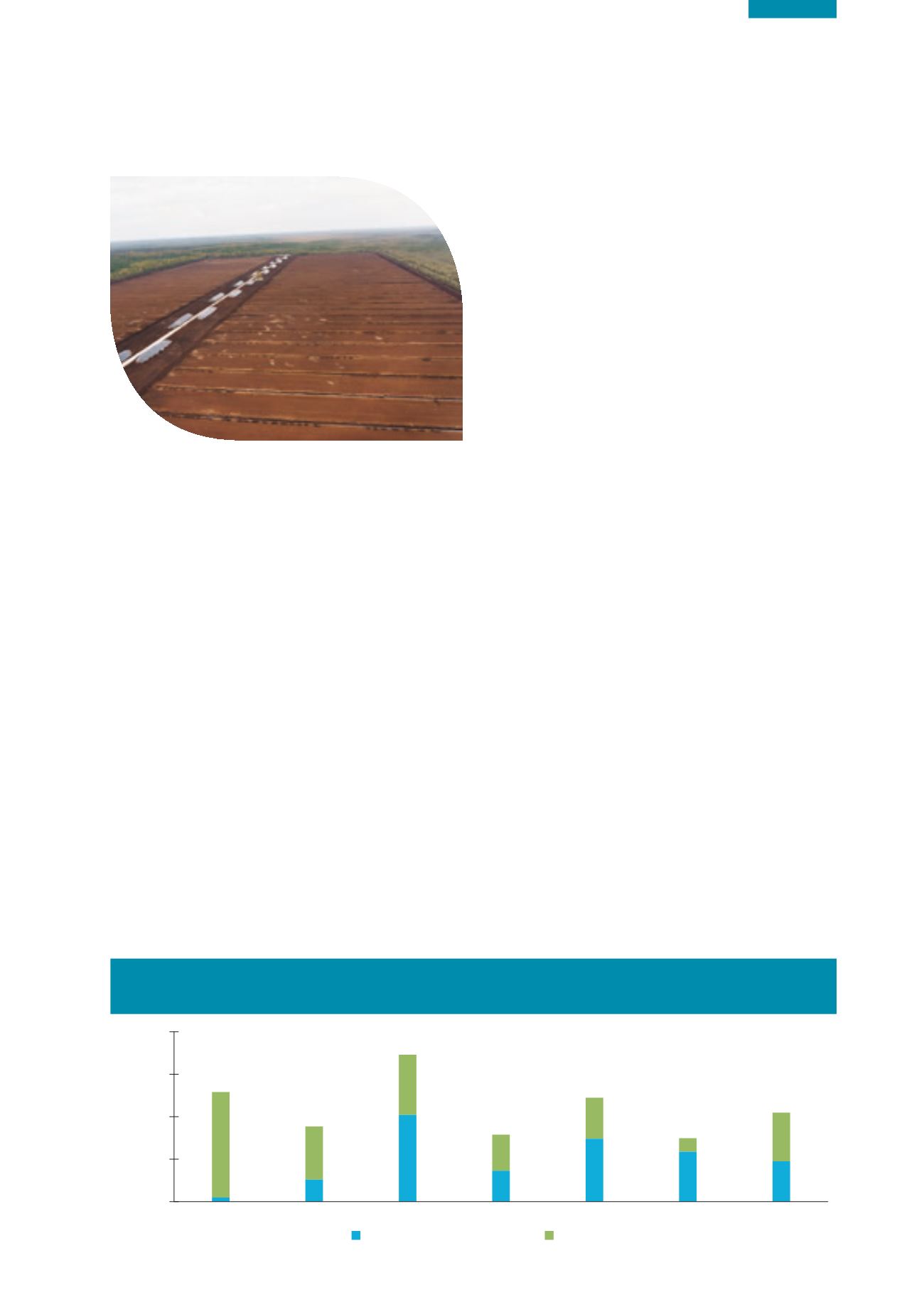

113
Chapter 7: Land and Soil
Forestry Expansion Programme and associated
environmental challenges
According to the National Forestry Policy Review (DAFM,
2014b) annual afforestation has decreased from over
20,000 ha in 1996 to just over 7,000 ha in each of the
past 3 years (2012‑2014). This Policy Review seeks to
increase afforestation by setting an annual afforestation
target of 10,000 ha/year by 2015 and a target of 15,000
ha/year for the period 2016‑2046. Since 1990, Ireland
has had one of the highest rates of increase in forest
expansion in the EU. This rapid increase may potentially
give rise to additional environmental pressures and requires
sensitive environmental management. Afforestation and
harvesting may adversely affect natural vegetation, soils,
biodiversity and landscape resources. These activities
can also impact on water quality through acidification
and nutrient mobilisation. However, if carried out in an
environmentally sensitive manner and in the right places,
expanding our national forestry cover can bring multiple
benefits across society, the environment and the economy.
The challenge will be to establish and maintain a sustainable
level of broadleaf planting to protect environmental sensitivities
(e.g. biodiversity and water quality) while still providing for an
economically viable commercial forestry resource.
Soil quality or contamination
Six key degradation processes can impact on soils: soil
sealing, erosion, organic matter decline, compaction,
salination and landslides. EPA research (EPA, 2014d) shows
that the main soil quality pressures in Ireland appear to
relate to surface sealing (urbanisation). Human activity is
also a significant driver of degradation through poor (or
inappropriate) land management practices. However, in
Ireland, the overall area of artificial surfaces remains low
compared with that in other EU Member States.
Soil contamination can occur as a result of unauthorised
waste-related activities, historical activities, leakages and
accidental spillages of chemicals. There is currently no
specific contaminated land policy in Ireland and therefore
no legislation in place to deal with it. However, according to
national legislation dealing with Integrated Pollution Prevention
and Control (IPPC)/Industrial Emissions Directive (IED) and
waste, the EPA is responsible for enforcing the remediation
of contamination identified at EPA-licensed facilities and the
licensing of remediation activities that fall under the above
legislation.
The National Waste Report for 2012 (EPA, 2014c) shows the
treatment of contaminated soil off-site in Ireland fell by 40% in
2012 compared with 2011. This correlates with the downturn
in the construction industry. Figure 7.4 shows the reported
off-site management of contaminated soils from 2009 to 2015
(EPA, 2014c, with additional recent data included).
The Environmental Liabilities Directive (ELD) (2004/35/EC)
and related national regulations establish a framework
for environmental liability based on the “polluter pays”
principle. This includes preventing environmental damage
to soils. A recent European Commission report on the
implementation status (by Member States) of the ELD
has been published (EC, 2016). This report shows that
implementation varies across Member States, with some
countries (including Ireland) having very few instances
of implementing the ELD. One recognised issue is that
there is no common understanding of the definition of
“significance threshold” for environmental damage.
Figure 7.4
Offsite Management of Contaminated Soils from Ireland 2009‑2015
(Source: EPA, 2014c With Additional Recent Data Included)
0
5,000
10,000
15,000
20,000
2015
2014
2013
2012
2011
2010
2009
tonnes
Managed in Ireland
Exported


















